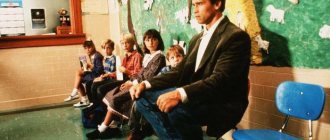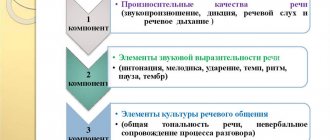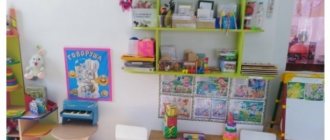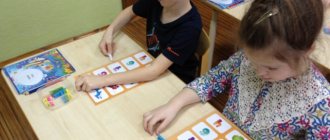Didactic game “Let’s make soup and compote”
By getting to know the world around us, its diverse vegetation and, in particular, fruits and vegetables, children also expand their knowledge about their beneficial properties and the variety of dishes that can be prepared. What a child encounters every day and what he will begin to use in his life in the future is important for his development today.
The acquired knowledge must be consolidated. For this purpose, the board game “Cooking Soup and Compote” was created. The idea is not new, but there is an original execution. The variability of the game has also been expanded.
Purpose of the game:
– consolidate children’s knowledge about fruits and vegetables.
Tasks:
– consolidate knowledge about fruits and vegetables: their names, appearance, growth characteristics, culinary qualities;
– develop the ability to compare and group objects according to characteristics;
– develop thinking, logic, memory, train attention; develop fine motor skills of the hands;
– develop interest in the world around you.
Equipment:
The board game is made of colored cardboard and consists of cut out figures: vegetables and fruits (potatoes, cabbage, onions, tomatoes, cucumbers, peas, beans, beets, apples, peaches, pears, plums, red and black currants), two pots and two plates.
Game action:
– group elements according to their characteristics.
Rules of the game:
The game can be played by 1 or 2 people.
Option 1: “Classification” of vegetables, “fruits” and “berries”.
The teacher places models of the “Soup” and “Compote” pots in front of the child, and vegetables, fruits and berries are placed randomly on the table next to the table. The teacher asks the child to choose an image of a fetus lying on the table, look at what is depicted on it, and give a name to the fetus. Define a general concept: “vegetable”, “fruit” or “berry”. Place the fruit in a suitable pan. What can you cook from it? Compote or soup? (As a result, fruits and berries go into compote, and vegetables into soup.)
Option 2: “Preparing soup and compote”
Each player has a saucepan and a plate. Figures of vegetables, fruits and berries are placed on the table in random order.
The players decide which of them “makes the soup” and which one “cooks”. According to the task being performed, players select the necessary components, name them and place them on a plate (in a pan).
Option 3: “What’s superfluous here?”
The teacher deliberately puts a fruit (two fruits) on the “Soup” casserole with vegetables. Does the child need to find another one and show him why? The Compost casserole game goes exactly the same way.”
Option 4: “Name and tell.”
Children can tell you what vegetables are needed for borscht, cabbage soup, pickles, and so on. Name the compote: “Cherry”, “Apple” and so on
In the future, the collection of vegetables, fruits and berries may be replenished with new and even exotic species (asparagus, pineapple, etc.).
Prepare according to the recipe
For the game, prepare 96 images of plant products. They should be divided into 12 groups of 8 identical pictures each. That is, 8 apples, peaches, cherries, and so on. Make 24 culinary recipes, they must have 2, 3 or 4 ingredients. You also need a saucepan, it can be a toy or even drawn.
Lay out the pictures on the table, ask the student to prepare compote according to the given recipe. The player selects the necessary ingredients and names them out loud. At the end of the work, he says what kind of drink he got, for example, cherry, apricot, apple.
Didactic game “Cooking soup and compote”
Kristina Erbulova
What else to read: Fairy tales about geometric shapes, interesting facts about mathematics
Didactic game “Cooking soup and compote”
I bring to your attention the didactic game “Cooking Soup and Compote” for cognitive development and to familiarize yourself with the environment.
Goal: to introduce the concepts of “soup” and “compote”, repeat the names of fruits and vegetables with children, consolidate the ability to divide them into groups, develop motor skills and coordination of finger movements in children, arouse cognitive interest and perseverance. Develop vocabulary, memory, speech.
Tasks:
Replenish vocabulary, develop oral speech, hand motor skills, memory, thinking, attention; To consolidate children’s knowledge about vegetables, fruits and berries, to name them correctly, classify and use the general concepts of “vegetable”, “fruit” or “berries”; Form an idea of the appearance features and where they grow;
Equipment: mock-ups of “Soup” and “Compote” pots, images of fruits and vegetables.
Game progress:
Option 1: “Name and tell.”
The teacher places models of “Soup” and “Compote” pots in front of the child and places fruits and vegetables on them. The child should call the vegetables located on the pan the name “Soup”, fruits and berries on the pan called “Compote”.
Option 2: “Classification” of vegetables, “fruits” and “berries”.
The teacher places models of the “Soup” and “Compote” pots in front of the child, and vegetables, fruits and berries are placed randomly on the table next to the table. The teacher asks the child to choose an image of a fetus lying on the table, look at what is depicted on it, and give a name to the fetus. Define a general concept: “vegetable”, “fruit” or “berry”. Place the fruit in a suitable pan. What can you cook from it? Compote or soup? (as a result, fruits and berries go into compote, and vegetables into soup).
Option 3: “What’s superfluous here?”
The teacher deliberately puts a fruit (two fruits) on the “Soup” casserole with vegetables. Does the child need to find another one and show him why? The Compost casserole game goes exactly the same way.”
Didactic game for disabled children “Nakhodilki”. Game from a hardware store Didactic game for children with disabilities “Nakhodki” Game from a hardware store, because the idea of this game was born from a visit to the store. Didactic game made of felt “Compote” on the theme “Fruit” Didactic game “Compote” Dear friends! I bring to your attention the didactic game “Connection”. The goal of the game is to teach children to distinguish. Didactic game made from felt “Jam” Continuing to practice my new hobby: sewing from felt, I decided to transfer the didactic game “Jam” to felt. This is an interpretation. An educational game for introducing children to popular applied arts. Didactic game “Make a pattern” The kindergarten activity program includes the following tasks in decorative painting: learning to draw based on Russian embroidery,.
Summary of a game lesson in the junior group “Cooking soup”
Lesson summary for the junior group “Cooking Soup”
Goal: to attract children to joint activities with adults. Objectives: 1. Learn to answer the teacher’s questions 2. Expand children’s horizons in the field of knowledge about vegetables 3. Form the prerequisites for role-playing games through joint activities with the teacher. 4. Learn to carry out the simplest work assignments. Preliminary work: examining models of vegetables, playing out nursery rhymes, joint activities using game modules. Materials: game module “kitchen”, models of vegetables, doll, toy Bunny, painting “Harvest in the garden”.
Progress
Educator: Guys, we have guests today, let's say hello to them Educator: The doll Katya came to visit us. Look, the doll brought us a picture. (children look at the picture) Tell us Katya, where have you been? Doll: I was visiting my grandmother in the village. There, in the summer, a lot of tasty and healthy vegetables grew in the garden and beds. I brought them to you. Game "What's in the bag?" The teacher takes out dummies of vegetables from the bag. He asks the children what vegetable this is, what color it is. Children: this is a tomato, it is red. This is an onion, it's yellow. This is a carrot, it's red. This is cabbage, it's green. Educator: the doll is tired and hungry. Let's make her some vegetable soup. But first, let's show Katya how our fingers can cook. Finger game “Cabbage” We chop and chop cabbage. (hitting the knees with the edge of the palm) We three, three carrots. (rub your fist on your palm) We salt the cabbage, salt it. We press and press cabbage. (imitation of actions according to the text). The teacher and the children approach the “Kitchen” game module. There's a bunny sitting there. Educator: Guys, look, the bunny also wants to help us cook soup. Look bunny carefully! First we need to take the dishes (addresses the child), ......give me a saucepan,......give me a big spoon. Children fulfill the teacher's request. Educator: Now let’s put the vegetables in a pan and put them on the stove. Bunny, do you like to eat soup? Bunny: I like to eat carrots, but I have never eaten soup. I also love playing with the guys. Educator: While the soup is cooking, let's play with the bunny. Physical exercise “The bunny is jumping” The bunny is jumping, hopping, hopping, hopping. To the green meadow. He plucks the grass, eats it, listens carefully to see if a wolf is coming. (imitation of the text) Educator: The soup is cooked, you need to pour it into plates and treat the doll and the bunny. (addresses the child) ……put the plates on the table,……. put small spoons on the table. Children fulfill the teacher's request. Educator: What a delicious soup it turned out to be! Guests, sit down at the table! Children treat the doll and the bunny. Source:
https://kladraz.ru/blogs/svetlana-igorevna-pushkareva/konspekt-zanjatija-v-1-mladshei-grupe-varim-sup.html
We recommend watching:
Summary of a didactic game for the 1st junior group of kindergarten Lesson on describing toys in the junior group of kindergarten Role-playing game for children of the junior group. Highway Role-playing game for the younger group of kindergarten. Daughters and mothers
Similar articles:
Synopsis of a physical education lesson in the junior group “Spring Puddles”
Summary of a lesson on speech development and modeling in junior group 1
Summary of educational activities on cognitive and speech development in the 1st junior group
Summary of a lesson on health conservation for the second junior group
Summary of an art lesson in junior group 1
I play and learn. Pictures for baby development (part 7)
I play and study. Early child development. Pictures with descriptions. Part 7
Plate
You can say that mom is preparing dinner. She is preparing soup. The stove is very hot. It's dangerous to play near her! There is a saucepan and a frying pan on the fire. They are boiled in a saucepan and fried in a frying pan.
Ask your child to tell you what dishes are on the stove. What is it boiled in and what is it fried in? After all, it’s dangerous to play near the stove. Play with the dishes and make some soup.
What else to read: Didactic game “Dress the dolls in national costume” for older preschool children
Dishes
You can say: Dad washes the dishes with warm water. The dishes are fragile and may break. Dishes can be small and small, large and small.
Ask your child: Tell me where the water comes from. What are forks, spoons, knives? What are deep dishes for? “Wash” the toy dishes.
Fridge
You can say: this is a refrigerator. Store food: butter, milk, eggs, fish. Here's the cheese, and here's the meat. The refrigerator is as cold as winter.
Ask your child to: say whether the refrigerator is cold or hot; what is a refrigerator for? if possible, put a shirt or jacket there. Find and name all the products in the images.
Didactic sensory game for kindergarten
Sensory educational game for children 4-6 years old
Sensory educational game “Borsch and compote” Author: Irina Nikolaevna Vasilyeva, kindergarten teacher at Olonsky MBDOU, Irkutsk region, Bokhansky district, village. Olonki.
Description of work: This material will be useful to kindergarten teachers and children aged 4-6 years. This game can be used at themed events, communication, socialization, artistic creativity (drawing, modeling, appliqué in the form of mannequins) (Vegetables and fruits are crocheted from threads). Tasks: to reinforce with children the name “Vegetables and Fruits”, the ability to divide them into groups and introduce children to the new concepts of “Borscht” and “Compote”. Development of fine motor skills by combining vegetables and fruits with buckets with buttons. With the help of riddles, proverbs, and poems, we develop children’s vocabulary, memory, and speech. The educational game “Borscht and Compote” has two names: “Vegetables and Fruits”. In class I use two guys at a time, from the very beginning we play "Vegetables and Fruits" to reinforce, and then we play "Borscht and Compote". 1st place. Game "Vegetables and Fruits". Two buckets of red and yellow colors are placed on the table (buttons are sewn in scattering on the buckets, and the bellies of the buttons are sewn on fruits and vegetables). On another teacher's table there are vegetables and fruits scattered: today we will solve puzzles and look for answers. The rules of the game are explained: I will give you riddles, and you must find a solution between fruits and vegetables. Whoever guesses faster raises his hand, if he is correct, comes to the table, takes the answer and attacks “Vegetables” - the red bucket and “Fruits” - the yellow bucket. The teacher begins to ask riddles, the children listen carefully and find answers to the puzzles. I was born for glory, curly head, whoever loves cabbage soup, look for me. (cabbage). The blue eggs were laid from the bird, they were hung on a tree: shell, pulp, sweet squirrel (plum). What dripped from the ground, fried and boiled? What did we boil in ashes, eat and praise? (Potato). Sometimes green, sometimes yellow, oval shaped. (Pear). I grew up in a flowerbed, I have a calm disposition: wherever I go, I will make everyone cry. (onion). I am sitting on a tower, Small as a mouse, Red as blood, Tasty as honey. (Cherry). The red girl is in prison, the scythe is on the road.. (carrots). The berries are green and everyone praises them, They grow on the bones, They hang in tassels. (grape). Green at the top, red at the bottom, grown in the ground (Beets). Red, ruddy, hanging from a branch. Scrub, bite into the delicious inside. (apple) Green branches grow in the garden. And about them - red babies (tomatoes). At the end of the game, the results are correctly summed up by solving riddles and distributing "Vegetables" and "Fruits". 2nd type of game. “The borscht is made.”
What else to read: Didactic games in mathematics. Number composition games
At the beginning of the game, conversation: - What “vegetables” do you know? – What do you think Borscht is made of? – What “fruits” do you know? – What do you think “Kompot” is made of? – Where can I find fruits and vegetables? (If the children suddenly find it difficult to answer, the teacher helps them ask leading questions. At the end of the conversation, summarize what “borscht” and “compote” are made of). Rules of the game. Before the game starts, the teacher divides the children into 2 teams, calling one team “Borsch”, the second “Composed”. In front of each team, at some distance, he places chairs with buckets and places mannequins with fruits and vegetables on a shelf. After the signal, the children must take turns collecting the “Fruits” or “Vegetables” they need. The team that completes the task faster and correctly wins. (while the children are playing, cheerful music is playing).
We recommend watching:
Didactic games with sand for children 3-4-5 years old Fun games for the middle group Game for kindergarten “Family Matters” Didactic games for preschoolers 3-5 years old
Similar articles:
Educational games for preschool and primary school children
Children's garden games for children from 3 to 5 years old
Role-playing game "Hospital" for older preschoolers
Role-playing game for preschoolers 5-7 years old
Didactic game for children of senior preschool age “Riding on the train”
Finger, kinesiological, coordination and movement games
It is necessary to constantly develop children's fine motor skills.
To make classes interesting and varied, you can use a variety of types of games. Goal
: development of fine and gross motor skills of the child’s hand through the use of finger games.
Tasks
:
- develop imagination, coordination of movements;
- develop attentiveness, memory and the ability to concentrate, the ability to navigate in space;
- to form good relationships between children, as well as between adults and children.
Materials for the lesson
: clothespins, rubber bands, beads, dough, rustling toys, bags, bottles, lids, yogurt cups.
The development of fine motor skills of the hands is very important in the process of a child’s development: his motor coordination improves, tension and stiffness are overcome. Fine motor skills of the hands interact with such higher properties of consciousness as attention, thinking, optical-spatial perception (coordination), imagination, observation, visual and motor memory, speech. Finger games are original and interesting because they represent a small theater where the actors are the children’s fingers.
The active work of the fingers can be observed in the finger game “Pau-Pauchina”
T. Borovik. First, children are shown playing with the first and second fingers, then they are offered a more complex version of the game with the first and fifth and with the second and third fingers.
Kinesiological relaxation games play an important role in the development of a child. Kinesiology comes from the Greek word kinesis, which means movement (referring to muscle movement). The word “logos”, which is usually translated as “science,” is also of Greek origin. Kinesiology is an independent, original direction of healing, based on a holistic approach to a person and on the use of muscle tone for a positive impact on the emotional sphere of a person. Kinesiology is the science of movement, or rather, the science of the language of movement. An example of the use of kinesiology in child development is the game “Star Cat”
.
The horned yellow moon sat in the heavens, A cat with stars in its whiskers came out of the house. “Oh, dear cat,” I said, barely breathing, “To see you off a little, it’s too good.” But the shy cat with stars in her whiskers wagged her tail and disappeared into the clouds. Our cat is tired of putting the kittens to bed, Now all the fidgets are sleeping quietly and sweetly. The cat sleeps, purring, in the soft clouds And she dreams of a mouse with stars in his mustache. And in the morning you will meet a cat in a hat, just “Ah!” A cat with stars in its whiskers is hurrying somewhere.
Looking at long-familiar household objects, for example, clothespins, we do not even imagine that they can also be used in finger play.
Game "Sun"
. Children take an image of the sun on cardboard and attach clothespins-rays to the edges.
Game "Dancing clothespins"
. An adult puts on a raincoat made from yellow disposable tablecloths with clothespins randomly attached to them. Children try to remove clothespins from a dancing adult.
Everyone is familiar with such an item as an elastic band. But it turns out that with its help you can design different geometric shapes. (Tactile-spatial game “Rubber Bands”
T. Borovik.) In almost every house there are beads. They can be worn not only as decoration, they can be used to draw - lay out an outline. It is useful to make giant beads for the same game, so that children learn to feel the scale. You need to string the balls, which are used as fillers for a dry pool, onto a rope.
Buttons of different sizes are of great interest to children; they can also be used in finger games, separating large buttons from small ones.
The child experiences pleasant tactile sensations from sculpting figures from salt dough. We also actively use mitten dolls in our work. Such games are useful not only for the development of speech and imagination, but also for exercises with the hand.
Children are invariably interested in coordination and plastic games, which are mini-theatricals, a story told with the help of hands and fingers. Game "Borsch"
T. Borovik.
Place a pan of water on the fire (
cotton on the left and right
).
Place a pan of water on the fire. Cook borscht, cook delicious vegetable borscht ( circular movements in front of you
), Cook borscht, cook delicious vegetable borscht.
One, two potatoes, the potatoes are boiling ( put the semicircular palms together
), One, two potatoes, the potatoes are boiling.
The cabbage made it thick! Thickly ( we move our fingers and raise our hands up
)!
The cabbage made it thick! Thick! Cook borscht, cook delicious vegetable borscht, Cook borscht, cook delicious vegetable borscht. Beets and carrots, chick, cut, chick, deftly, chick ( right hand on the left hand shows the work of the knife
), Beets and carrots, chick, cut, chick, deftly, chick.
Let's add, mmm! Sweet pepper, mmm ( finger click
)!
Let's add, mmm! Sweet pepper, mmmm Cook borscht, cook delicious vegetable borscht. Cook borscht, cook delicious vegetable borscht. Red tomatoes, red tomatoes ( hands seem to hold tomatoes, showing their weight
), Red tomatoes, red tomatoes, Onion, parsley and dill (
claps on the right and left
).
Onion, parsley and dill. Cook borscht, cook delicious vegetable borscht. Cook borscht, cook delicious vegetable borscht. Everything is cooked ( clap on the knee
)! What have you forgotten? We forgot the salt.
At the end of many activities, we invite children to play in a fun orchestra. His tools include rustlers made from large plastic bottles, metal bottle caps, wooden sticks, small plastic bottles, yogurt cups and plastic bags. Using these homemade tools not only encourages children to look at ordinary objects in a new way, but again serves to develop motor skills.
Liliya Marakhanova, music director of GBOU School No. 329 DO, Moscow
Didactic game for kindergarten. Mom is making soup
Author: Natalia Evgenievna Khokhlova Place of work: MKDOU No. 22, Miass, Chelyabinsk region Position: teacher-defectologist Name of the resource: didactic game printed on the board “Mom is making soup” Brief description of the resource: game for forming a simple sentence of 4 words (accusative case). The purpose and objectives of the resource: developing the ability to formulate sentences based on 4-word thematic images, consolidating the consistency of words in a sentence; developing the ability to use verbs in the present or past tense, answering the questions “What are they cooking?” or “What did you cook?”, consolidating knowledge on the subject “Vegetables”, “Food”. Relevance and significance of the resource: the game can be used by speech therapists, defectologists, and parents in correctional work with children. Equipment: the game is made on a PC (personal computer), consists of cut cards and a playing field. Practical application: individual lessons, frontal correction lessons (as a demonstration of a task or a game directly “one at a time”). Method of working with the resource: 1. Individually: the child takes pictures that are turned over from the stack, puts the pictures one by one next to the image of his mother and says the phrase (mom is preparing potato soup (cooking).) 2. In front: used as a demonstration of the task using magnetic board and magnets; children work verbally and face-to-face instead. One source







